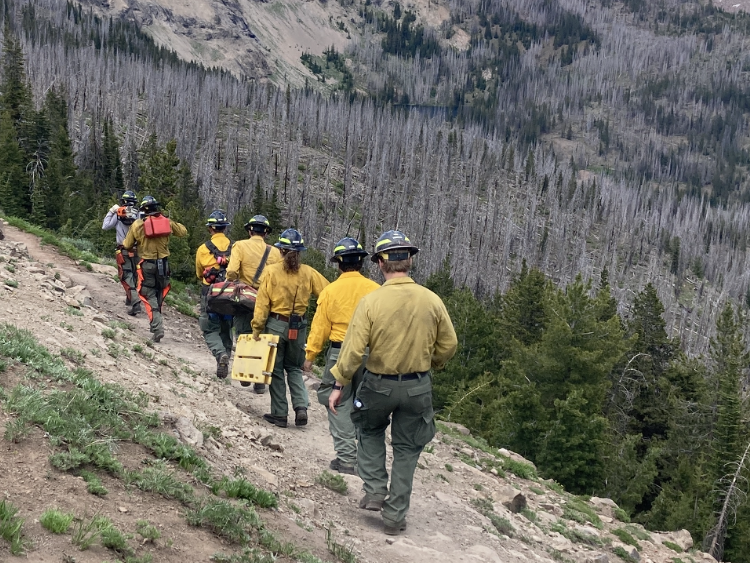ODFW releases draft of updated wolf management plan
Published 3:30 pm Wednesday, April 17, 2019

- A gray wolf moves through deep snow in this file photo.
A long-awaited update of Oregon’s Wolf Conservation and Management Plan could finally be adopted in June, though not without controversy.
The Oregon Department of Fish & Wildlife released its latest draft of the revised plan April 15, nearly five years after it was first due. The Fish and Wildlife Commission is expected to vote on the proposal at its June 7 meeting in Salem, which will include public testimony.
One major conflict remains the ability of wildlife managers to kill wolves that repeatedly prey on livestock. Wolves in Eastern Oregon are managed under Phase III of the current plan, which defines “chronic depredation” as two confirmed attacks in any period of time.
The revised plan would change the definition to two attacks in nine months. Ranchers have long argued they need the ability to kill certain wolves as a management tool to protect their animals.
Gray wolves are still federally protected west of highways 395, 78 and 95, and can only legally be killed in cases of self-defense. However, the U.S. Fish and Wildlife Service has proposed delisting wolves across the Lower 48 states, which would place the animals under state management.
ODFW released its annual report earlier this month, showing an increase in the minimum population to 137 wolves in 2018, up 10 percent over the previous year. The number of confirmed attacks on livestock also increased 65 percent over 2017, with 28 incidents. More than one-third of those were attributed to the Rogue pack near Crater Lake in Western Oregon.
Agency officials spent months working with hunters, ranchers and environmental groups to reach a compromise on the most contentious parts of the plan revision, including how best to minimize livestock losses. The state spent more than $100,000 to hire a professional mediator, who facilitated meetings between August 2018 and January 2019.
By the end, each of four environmental groups — Oregon Wild, Defenders of Wildlife, Cascadia Wildlands and the Center for Biological Diversity — pulled out of the talks, describing the negotiations as flawed and skewed in favor of killing wolves rather than prioritizing nonlethal forms of deterrence.
Steve Pedery, conservation director for Oregon Wild, said the group remains concerned about the draft plan, and criticized Gov. Kate Brown in a statement.
“With this wolf plan, Brown continues to ignore science and the public while keeping Oregon on an uninterrupted march to wolf hunting and trapping,” Pedery said.
According to ODFW, the plan does not call for any controlled wolf hunts, and any such proposal would require commission approval through a separate planning and hunt development process.
Derek Broman, ODFW carnivore and furbearer program coordinator, said wolf management is a polarizing topic that makes finding a consensus difficult.
“But regardless of people’s views on wolves, the wolf population in Oregon is growing in size, the number of packs and packs reproducing, while expanding its range,” Broman said.
Jerome Rosa, executive director of the Oregon Cattlemen’s Association, said ranchers are glad to see the draft plan is up for review, and look forward to the process.
Sristi Kamal, Oregon senior representative for Defenders of Wildlife, said the plan does not represent a consensus or compromise.
“It’s been over three years since the wolf plan was due for an update, and each iteration has gotten worse for wolves,” Kamal said. “The latest updates to the plan — which make it easier to kill wolves in response to livestock predations and declines in ungulate populations — are the predetermined outcome of a process that only furthers the agency’s agenda.”









